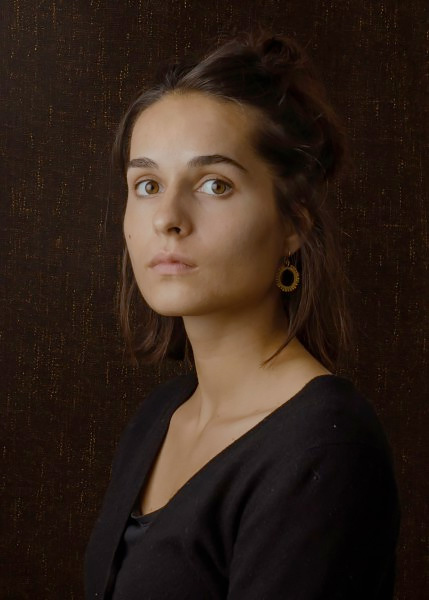Nanna Heitmann is a German/ Russian documentary photographer, based between Russia and Germany. Her work has been published by TIME Magazine, M Le Magazine du Monde, De Volkskrant, Stern Magazine and she has worked on assignments for outlets including The New York Times, TIME Magazine, The Washington Post and Stern Magazine. She has received awards that include the Leica Oscar Barnack Newcomer Award, the Ian Parry Award of Achievement. Nanna Heitmann joined Magnum as a nominee in 2019.
Hiding from Baba Yaga
"Vasilisa was running faster than she had ever run before. Soon she could hear the witch, Baba Yaga's mortar bumping on the ground behind her. Desperately, she remembered the thin black cat's words and threw the towel behind her on the ground. The towel grew bigger and bigger, and wetter and wetter, and soon a deep, broad river stood between the little girl and Baba Yaga.
Vasilisa threw the comb behind her, and the comb grew bigger and bigger, and its teeth sprouted up into a thick forest, so thick that not even Baba Yaga could force her way through. And Baba Yaga the witch, the bony-legged one, gnashing her teeth and screaming with rage and disappointment, finally turned round and drove away back to her little hut on hen's legs."
From time immemorial people have sought protection and freedom on the banks of the Yenisei and the adjacent wild taiga. For a long time, the banks of the Yenisei have been pervaded by nomadic peoples.
The Russians, coming from the west, chased by the greed for valuable fur, did not reach the river until 1607. Criminals, escaped serfs, apostates or simply adventurers, joined together in wild rider associations and expanded ever deeper into the vast wild Taiga. The life of the settlers in Siberia was free and self-determined for the time. Old believers settled on lonely banks of the Yenisei to escape the persecution of the Tsar and later the Soviets.
With Stalin the Yenisei became a place of exile and forced labor. The Soviets not only chained the native peoples, but also the Yenisei. With two giant dams they created lakes of almost 400km length. Villages sank in the water, the climate changed. A dense fog swept over the river.
The USSR is history. Today, most people are drawn to big cities like Moscow or St Petersburg. Therefore the Yenisei turns more and more into a space for dreamers and loners to escape the worldly world.
Not far from the banks of the Yenisei lives Yuri, who has built a small hut on a landfill. Here he can find food for his 15 former street dogs, here he lives freely. Nothing keeps him in the city, where thick coal dust covers the white snow in winter. "All my friends are in the cemetery. Drugs or alcohol."
Following the stream of the Yenisei north one encounters Valentin. An self claimed anarch ecologist - a former officer, traumatized by war missions. Today he lives on his small property in the forest. Even at minus 50 degrees, he sleeps outside by the fire. From endless wars he has enough. "All the people of this world, live together in peace and protect your forests." Only to those who threaten the Siberian forests he declares war. "We have a wonderful forest. How many tress grow here. But we need more forests to breathe. Humanity destroyed our forests. These must be revived immediately. "
Not far from the source of the Yenisei, Vaselisa lives in the village of Old Believers. Her parents are both deaf and the only heathens in a village that lives strictly to century-old rituals. She doesn't like the children in her village. Her only friend lives in the village of Sissim. While summer holidays the Yenisei and a walk separates them from each other.
Encountering all this different people, there is a bond which connects them with each other. The seek of freedom, protection, imprisonment and isolation. The Yenisei and its woods become a metaphor of a dreamscape: Loneliness, unfulfilled dreams, death, abandoned hopes shape people as much as the vast nature, which at the same time gives so much freedom and places of retreat.
